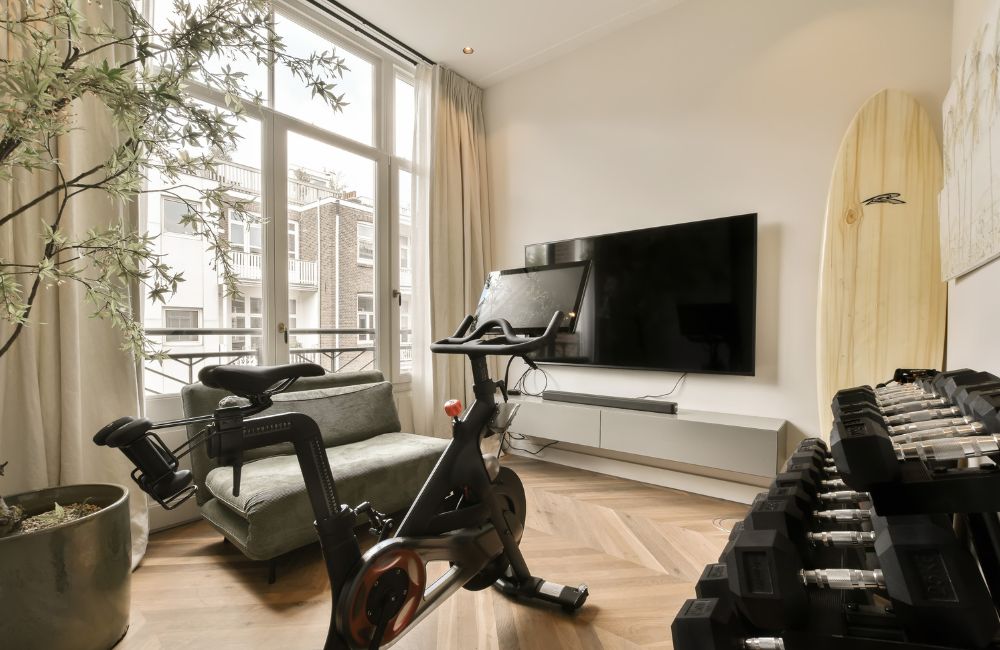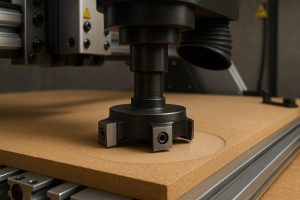Last Updated on August 21, 2025 by Team Ideas24
You can get fit at home without draining your wallet. A budget home gym blends smart gear choices with creative space use. Start with clear goals and a simple plan. Pick a few pieces that do double duty. Build momentum with quick wins and consistent routines.
Contents
Who This Guide Is For
This guide is for anyone who wants a practical, compact setup at home. Renters and studio dwellers who need quiet gear and no-drill solutions will feel right at home. Small spaces that double as living rooms or nurseries count too. You want equipment that tucks away fast. You value smart layouts over big machines.
It’s also for beginners and people restarting after a long break. Seniors and anyone managing sore knees, stiff backs, or balance issues get clear options. You’ll see low-impact moves and simple form cues. We include progressions that scale from bodyweight to light loading. You choose a pace that matches your energy and recovery.
And it fits busy lives. Parents, shift workers, and students who train in short bursts can follow along. Tight budgets that still demand quality won’t be left behind. We cover secondhand finds, space-saving storage, and upgrade paths. Expect quick wins, real workouts, and habits you can keep.
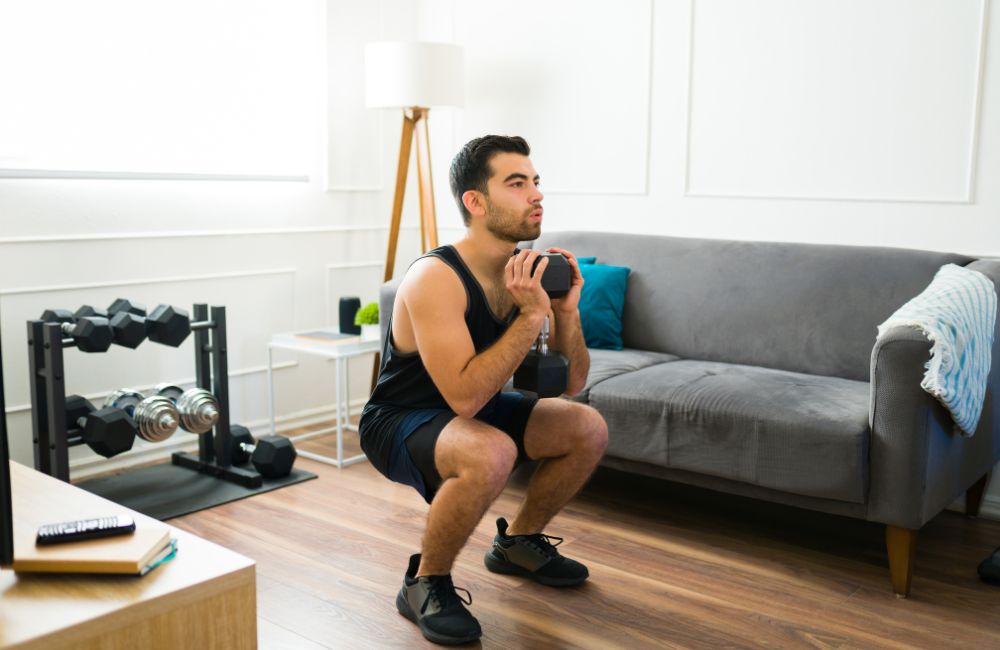
Using Strut With Your Budget Home Gym
A smart training plan can pair lifestyle changes with medical support when needed. GLP-1 therapy may help control appetite while your budget home gym builds strength, mobility, and daily activity. Use both only under a clinician’s guidance, and keep the long game in view.
What Strut Provides
Strut is a telemedicine service with U.S.-licensed doctors who evaluate you online for weight-management care and, if appropriate, coordinate prescriptions to your chosen pharmacy or fulfill them through Strut. It highlights compliance standards with LegitScript accreditation.
Oral GLP-1 Options
Strut offers compounded once-daily sublingual lozenges of semaglutide and tirzepatide. These may be considered for people who can’t use injections, with medical necessity determined by a physician.
How The Telehealth Visit Works
You complete an online intake. A U.S.-licensed physician reviews your history and goals, then decides if treatment fits. If approved, the prescription can be sent to a local pharmacy or fulfilled through Strut with ongoing follow-ups.
Telemedicine reduces friction for medical oversight. Home training reduces friction for exercise. Put them together and you remove two common barriers at once. That harmony helps a budget home gym deliver steady progress while licensed clinicians guide any needed treatment.
Essential Gear That Punches Above Its Price
Machines aren’t required for strength. A budget home gym thrives on compact tools. Choose items that scale with progress and store easily. Prioritize stability, adjustability, and movements that cover essentials.
Resistance Bands With Door Anchor
Bands deliver push, pull, hinge, and rotation in little space. A door anchor creates dozens of angles without drilling. Loop mini-bands for hips and shoulders. Track band colors like weight plates. This one system can carry full-body sessions in a budget home gym with ease.
Adjustable Dumbbells Or Loadable Handles
Space is precious. Handles that change weight keep volume high and storage low. Use micro jumps to progress weekly. Balance pairs for bilateral work and go single for core demand. Flat sides help with floor moves and reduce rolling between sets.
Kettlebell Or Sandbag For Hybrid Work
One bell or a shaped bag blends strength and cardio. Swings, cleans, carries, and squats cover the heart and muscles improvement. Change tempo, time, or density to scale effort. Soft-shell bags protect floors. The grip work pays off in daily life and sport.
Suspension Trainer For Whole-Body Strength
Anchored to a door or beam, straps create adjustable bodyweight moves. Step forward to load, step back to deload. Hit rows, presses, hinges, and core without heavy iron. Pair with bands for angles you can’t get on the floor. Sessions stay joint friendly and fast.
A Stable Step And Foldable Bench
A step unlocks box squats, step-ups, and elevated planks. A foldable bench opens presses and rows, then disappears under a bed. Add sliders for lunges and core. Check level and wobble before lifting. Reliable platforms make a small space feel like a full studio. Your budget home gym gets more done with less.
Set a Realistic Budget
Start with clarity on what you need and what you can afford to spend. A budget home gym grows in stages. Define essentials, wishlist items, and timelines. Keep flexibility, shop smart, and plan upgrades.
Define Your Training Priorities
Decide what you’re solving first. Strength, mobility, and cardio each ask for different tools. Pick the goal that moves the needle today. Your choices shape space, storage, and session flow. A tight focus stops random purchases and keeps your budget home gym intentional and lean.
Choose A Simple Equipment Stack First
Start with a compact trio. Bands, a single kettlebell or sandbag, and a sturdy step cover a lot of work. You can push, pull, hinge, squat, and carry. Add one new tool only when you’ve maxed what you own. This builds skill and keeps clutter down.
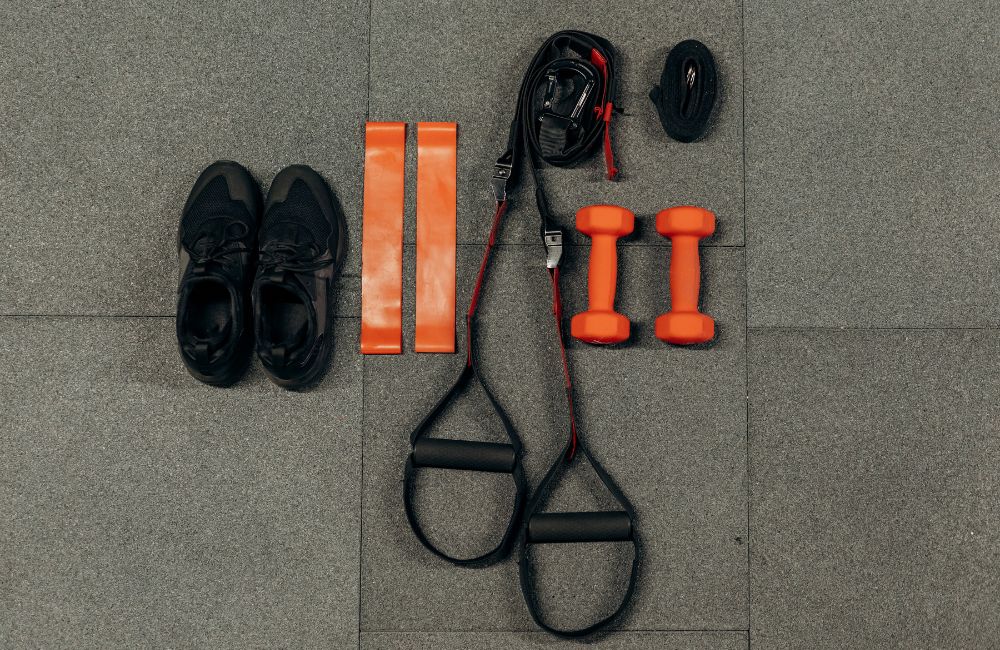
Build In A Secondhand Strategy
Great pieces often live in closets and garages. Check local listings, community groups, and gym closures. Inspect for cracks, loose parts, and rust. Test adjustments and anchors before buying. Clean, recondition, and label load limits so everything stays safe and ready.
Plan An Upgrade Path Without Clutter
Plot milestones tied to performance and consistency. Hit your reps or minutes for four weeks, then unlock the next tool. Choose gear that nests, folds, or hangs. Design storage before adding anything. Your future self will thank you when setup takes seconds.
Track Spending And Progress Together
Use a simple sheet that logs dates, sessions, and small wins. Add a note for how each item helped. If a tool sits untouched, sell or trade it. Let results guide purchases. Your budget home gym evolves on purpose, not impulse.
Measure Your Space and Plan Layout
Planning your layout and measuring every inch protects joints, prevents clutter, and saves money. You’ll pick the right gear, avoid returns, and create smooth training flow in any room effectively.
- Measure length, width, and ceiling height. Note door swings and window clearance.
- Map outlets, light switches, and vents.
- Tape a floor box for your main zone. Test squats, presses, and swings inside it.
- Leave walkways clear so you can move between exercises without trips.
- Use walls and doors with tension poles and over-door anchors. No drilling needed.
- Keep headroom for presses and band work. Watch fans and low fixtures.
- Plan zones for strength, mobility, and cardio. Keep transitions short.
- Choose storage that works as equipment. A bench with bins, a step that hides bands.
- Use rolling crates and under-sofa bins for quick resets.
- Place hooks on freestanding racks for belts, towels, and jump ropes.
- Set mats away from heaters and vents. Add a fan for airflow.
- Aim lights toward your training zone. Good light improves form checks on camera.
- Do a dry run of a full session. Fix snags that cost more than five seconds.
- Adjust camera angles now so cues and range of motion are visible.
- Keep water, towel, and timer within reach. Reduce breaks and clutter.
- Re-check layout monthly as your budget home gym grows.
Flooring and Noise Control
Flooring protects joints, equipment, and neighbours. A budget home gym needs cushion, grip, and smooth operation. Choose stackable solutions you can move. Manage vibration and impact to keep workouts friendly.
Pick The Right Base Layer
Start with interlocking mats or a roll of dense foam. Cover the training zone wall-to-wall for support. Add a plywood sandwich under heavy lifts when floors flex. Tape seams or use edge borders so tiles stay locked.
Keep edges tight to prevent toe catches and trips. Replace worn or glossy tiles before they split or slip. Inspect weekly for gaps, curling corners, or compressed spots that reduce cushioning.
Control Vibration At The Source
Energy travels through every contact point, not just impacts. Put rubber pads under steps, benches, racks, and cardio platforms. Use landing pads for controlled deadlifts, cleans, and swings. Hold the last inch to reduce bounce and shock.
Keep plates close to the body during lowers. Shift plyometrics to soft surfaces and lower heights indoors. These small choices cut vibration, protect floors, and keep your budget home gym quiet for neighbors.
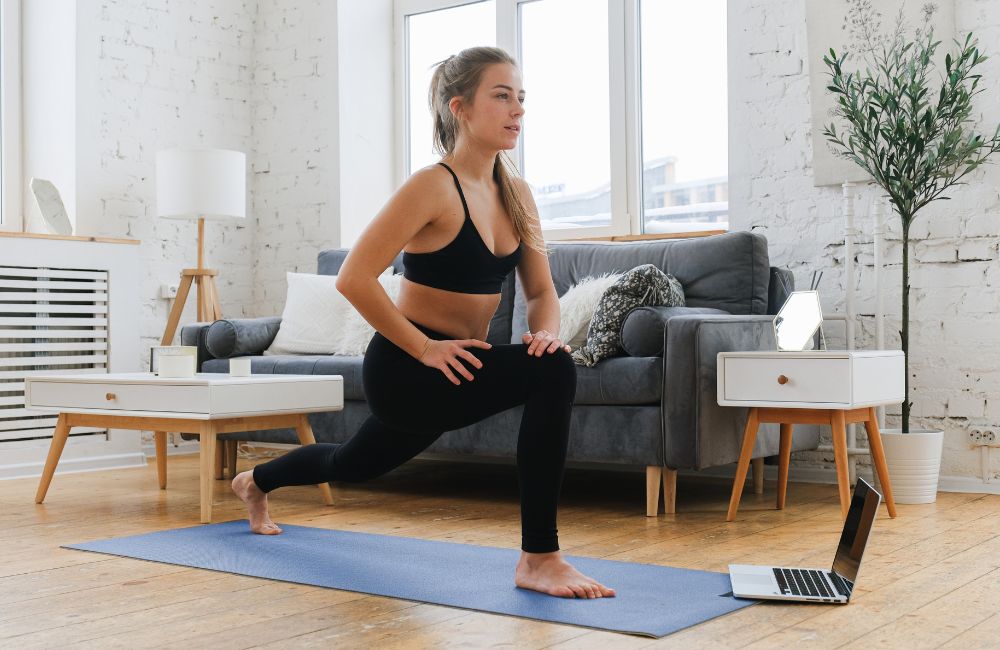
Keep Peace With Neighbors
Noise is more than thuds. It includes dropped clips, squeaky bands, rattling collars, and loud timers. Wrap metal handles with tape or sleeves to soften contact. Choose silent timers, soft-strap heart monitors, and headphones.
Schedule jump work for daytime and pick marches or step-ups at night. Practice controlled returns, not bounces. These habits build goodwill with neighbors and make your budget home gym sustainable in apartments, townhomes, and shared houses.
Make Cleaning Fast And Regular
Sweat and dust cut grip, harbor odor, and wear gear. Keep a spray bottle, microfiber cloth, and small brush in a caddy. Wipe mats, handles, and anchors after each session. Vacuum weekly to remove grit that eats foam and coatings.
Wash towels hot and air-dry bands flat. Log daily cleaning checks on your sheet. Clean floors and tools protect joints, extend equipment life, and keep a budget home gym inviting.
Conlcusion
Building a budget home gym is about picking essentials and using space wisely. Start small, train consistently, and upgrade only when the basics feel easy. Plan the layout, manage noise, and keep storage within reach so setup takes seconds. Track sessions, clean gear, and review what you actually use so you’ll buy smarter. Keep the focus on habits and safe form, and your home gym will pay off every week.
For mor ways on improving your well-being, check out our home design innovations for self-care.

